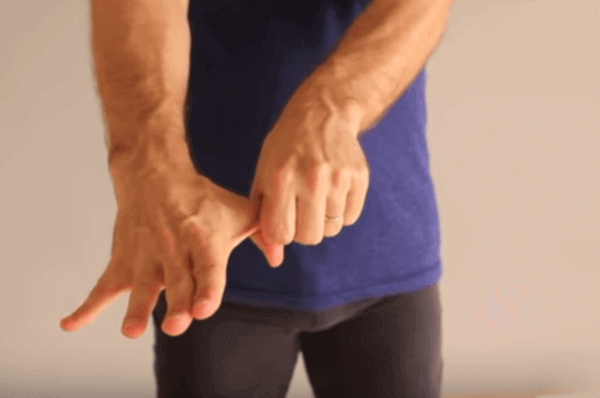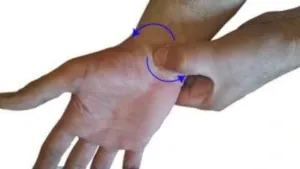Why Hair Stylists Get Carpal Tunnel Syndrome
(And what to do about It)
Practically everybody in the business knows that hair stylists and carpal tunnel syndrome are almost synonymous. In fact, practically every stylist knows a colleague who's severe finger or hand
pain,
numbness,
shooting electric shocks,
burning or
weakness sidelined a successful styling career.
But why is hairstyling plagued so severely by this disorder? Sure, hair stylists use their hands a lot. But so do many other occupations that aren't overly burdened by this problem.
This article describes what's going on - and the proven steps you can take to control this debilitation condition.
Table of Content
- Why stylists get carpal tunnel so often
- How to prevent carpal tunnel syndrome
- 4 Core Carpal Tunnel Exercises
- Stop Stretch
- Prayer Stretch
- Finger Interlace Stretch
- Thumb Stretch
- BONUS: Self Massage
- Summary
Why stylists get carpal tunnel so often
There are numerous articles about occupations with the most carpal tunnel syndrome. The
National Institutes of Health says that hairstyling has nearly 5 times the incidence of carpal tunnel compared to the rest of the population. The prevalence is about 86%. Compare that with construction workers who have a prevalence of about 27%.
So what's the reason for the high proportion of carpal tunnel in hair stylists? Actually, it's not difficult to see the problem.
Professional hairdressers and stylists do certain things A LOT. That is, they constantly use shears, grip tools (combs and brushes), and twist their wrists. In other words, their fingers and hands are always moving, pinching, gripping, twisting, turning, and bending.
Using shears is especially taxing on the thumb and forefinger. The thumb makes rapid and forceful open-close motions which cause huge stresses on tendons. The thumb also provides most of the force when gripping an object.
The same goes for gripping and releasing a hairbrush or other tools. In fact, most hair stylists can see this
list of harmful hand activities and identify most (if not all) which are a part of their daily life. These hand activities are the seeds for growing carpal tunnel syndrome.
How to prevent carpal tunnel syndrome
► If your
symptoms of carpal tunnel syndrome are still in the MILD stage, you have a great chance of eliminating them. Just follow the directions for carpal tunnel stretching exercises below. If you don't so something now, symptoms will likely worsen.
► If your symptoms are MODERATE or
SEVERE, then you'll need more than just carpal tunnel stretching exercises.
(learn your actual severity here) That means you require a more complete and aggressive approach.
(see it here) That approach includes 4 core stretching exercises PLUS myofascial release massage PLUS night bracing.
Below are the
4 core stretching exercises which can bring your hands back to normal again if symptoms are just beginning. You can expect symptoms to reverse in about 1 month when you perform these 4 core stretching exercises
after every client session
(or at least every hour).
Happily, in total they only take 1-2 minutes to complete.
But they need to be done routinely.
4 Core Carpal Tunnel Exercises
All hairdressers and stylists should do
ALL
of the following core stretching exercises for carpal tunnel during each client break. They're quick and simple. And when done regularly they
WILL
make a big difference.
1. Stop Stretch
2. Prayer Stretch
3. Finger Interlace Stretch
4. Thumb Stretch
BONUS: Self Massage
Summary
For hair stylists, carpal tunnel syndrome is an occupational hazard. The profession is known to be high risk for developing this painful condition. But there are great core exercises targeted toward relieving symptoms — and even reversing carpal tunnel completely. But to be successful, you must commit to taking the time to do these exercises regularly during your workday.








